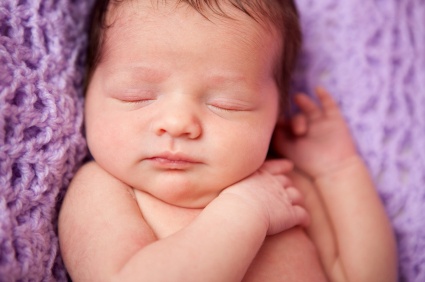October is Safe Sleep Awareness Month, highlighting the importance of proactive steps for infant sleep safety. Sudden Unexpected Infant Death (SUID), a new broader term for Sudden Infant Death Syndrome (SIDS), is defined by the Centers for Disease Control and Prevention (CDC) as the sudden and unexpected death of a child under 1 year of age, which often occurs “during sleep or in the baby’s sleep area.” While the number of SUID cases has decreased in recent decades, the CDC reports 3,500 infants still die unexpectedly in the United States each year. Even after a full investigation, the direct cause of death in some cases remains a mystery. In an effort to help avoid SUID, health care experts, including the American Academy of Pediatrics (AAP), recommend ways to keep infants safer during sleep.
Take symptoms seriously
Investigations into some unexpected infant deaths during sleep have revealed undiagnosed infections, metabolic diseases or cardiac conditions. While illnesses can certainly exist without warning signs, it is important to trust your instincts and take visible symptoms seriously. If you are concerned, seek medical attention. The AAP supports childhood vaccinations for known infectious disease prevention. If there is a chance your infant has ingested something or has suffered any type of trauma, it is recommended you seek medical attention before your child is allowed to sleep. Evidence also suggests that infants who are breastfed experience lower rates of SUID, as do infants who live in homes without cigarette smoke and who are not exposed to toxic substances such as drugs and alcohol. Talk to your physician about the best ways to regulate your infant’s body temperature to avoid overheating during sleep, and always monitor your infant when not in the child’s designated sleeping environment.
Place your baby on his or her back to sleep
Experts agree the safest sleep position for infants is on their backs, on firm surfaces. While an infant can easily fall asleep in another position, such as sitting up in car seats, strollers, swings, infant carriers or infant slings, try to avoid “routine sleep” in these products, specifically for babies under the age of 4 months. If your baby falls asleep in a sitting position, including an armchair or couch, put safety first and move your sleeping baby to his or her designated sleep area, lying flat on a firm surface, free from hazards. The AAP also cautions against co-sleeping with an infant in the adults’ bed. While not uncommon in some families, evidence has found a higher risk for suffocation or entrapment during co-sleeping.
Use products that meet safety standards
Before you buy a crib, bassinet, portable crib, play yard or mattress, check to see if it’s approved by the Consumer Product Safety Commission (CPSC). There are many products on the market that promise to promote sleep, but they may not all be safe or intended for unsupervised use. Never use products with missing parts, which may be unstable, and stay informed on product recalls, which can typically be found on the CPSC website. Community resources such as Cribs for Kids are available for low-income families to help provide all infants with safe sleeping products. Steer clear of products that claim to prevent SIDS/SUID and stick with the tried-and-true AAP safe sleep recommendations.
Simplify your infant’s sleeping area
Unexplained infant deaths may be caused by suffocation, asphyxia or entrapment. Keep your baby’s sleeping area clear of dangling cords, electric wires and window-covering cords, which can be a strangulation danger. Avoid placing soft objects in the baby’s sleeping area, such as pillows or pillow-like toys, quilts, comforters, sheepskins and loose bedding. A child under 1 year of age generally lacks the strength required to easily change positions, especially if his or her mouth or nose becomes covered. Sleeping clothes, such as a “sleep sack,” can take the place of blankets by providing warmth without being a hazard. Evidence suggests pacifiers may also help prevent against SUID, but should not be attached to a child, especially around his or her neck.
